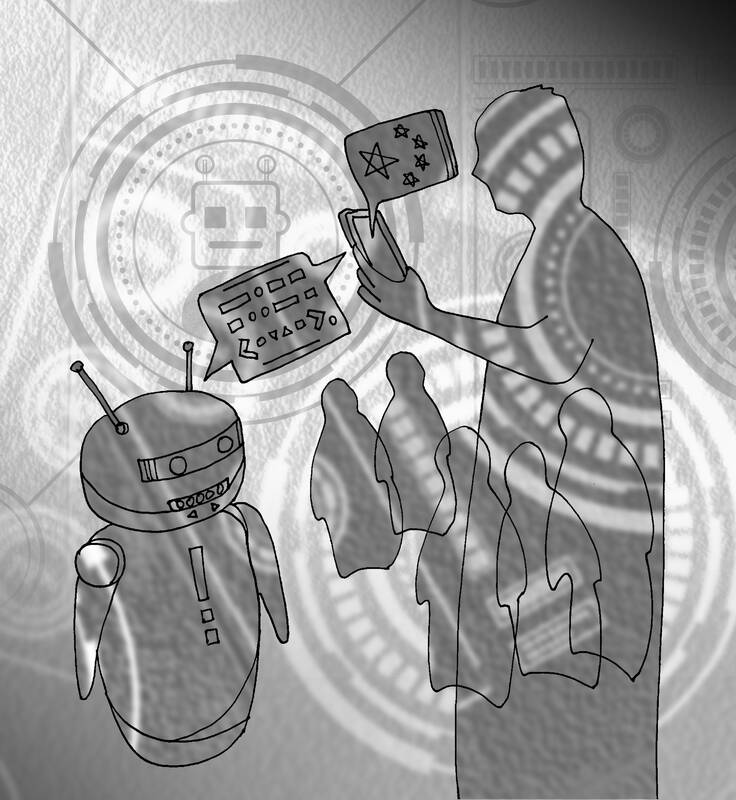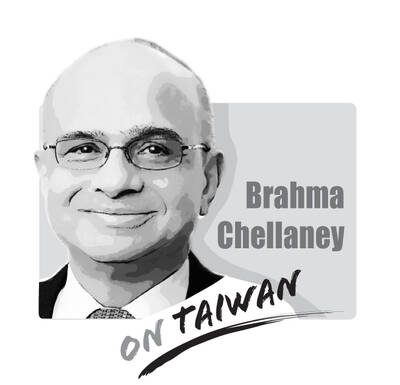Beijing’s rigorous push for chatbots with core socialist values is the latest roadblock in its effort to catch up to the US in a race for artificial intelligence (AI) supremacy. It is also a timely reminder for the world that a chatbot cannot have its own political beliefs, the same way it cannot be expected to make human decisions.
It is easy for finger-wagging Western observers to jump on recent reporting that China is forcing companies to undergo intensive political tests as more evidence that AI development would be kneecapped by the government’s censorship regime. The arduous process adds a painstaking layer of work for tech firms, and restricting the freedom to experiment can impede innovation. The difficulty of creating AI models infused with specific values would likely hurt China’s efforts to create chatbots as sophisticated as those in the US in the short term. However, it also exposes a broader misunderstanding around the realities of AI, despite a global arms race and a mountain of industry hype propelling its growth.
Since the launch of OpenAI’s ChatGPT in late 2022 initiated a global generative AI frenzy, there has been a tendency from the US to China to anthropomorphize this emerging technology, but treating AI models like humans, and expecting them to act that way, is a dangerous path to forge for a technology still in its infancy. China’s misguided approach should serve as a wake-up call.

Illustration: Tania Chou
Beijing’s AI ambitions are already under severe threat from all-out US efforts to bar access to advanced semiconductors and chipmaking equipment. However, Chinese Internet regulators are also trying to impose political restrictions on the outputs from homegrown AI models, ensuring their responses do not go against Chinese Communist Party ideals or speak ill of leaders like Chinese President Xi Jinping (習近平). Companies are restricting certain phrases in the training data, which can limit overall performance and the ability to spit out accurate responses.
Moreover, Chinese AI developers are already at a disadvantage. There is far more English-language text online than Chinese that can be used for training data, not even counting what is already cut off by the Great Firewall. The black box nature of large language models (LLM) also makes censoring outputs inherently challenging. Some Chinese AI companies are now building a separate layer onto their chatbots to replace problematic responses in real time.
However, it would be unwise to dismiss all this as simply restricting its tech prowess in the long run.
Beijing wants to be the global AI leader by 2030, and is throwing the entire might of the state and private sector behind this effort. The government reiterated its commitment to develop the high-tech industry during last week’s Third Plenum, and in racing to create AI their own way, Chinese developers are also forced to approach LLMs in novel ways. Their research could potentially sharpen AI tools for harder tasks that they have traditionally struggled with.
Tech companies in the US have spent years trying to control the outputs from AI models and ensure they do not hallucinate or spew offensive responses — or, in the case of Elon Musk, ensure responses are not too “woke.” Many tech giants are still figuring out how to implement and control these types of guardrails.
Earlier this year, Alphabet Inc’s Google paused its AI image generator after it created historically inaccurate depictions of people of color in place of white people. An early Microsoft AI chatbot dubbed “Tay” was infamously shut down in 2016 after it was exploited on Twitter and started spitting out racist and hateful comments. As AI models are trained on gargantuan amounts of text scraped from the Internet, their responses risk perpetuating the racism, sexism and myriad other dark features baked into discourse there.
Companies like OpenAI have since made great strides in reducing inaccuracies, limiting biases and improving the overall outputs from chatbots — but these tools are still just machines trained on the work of humans. They can be re-engineered and tinkered with, or programmed not to use racial slurs or talk politics, but it is impossible for them to grasp morals or their own political ideologies.
China’s push to ensure chatbots toe the party line may be more extreme than the restrictions US companies are self-imposing on their AI tools. However, these efforts from different sides of the globe reveal a profound misunderstanding of how we should collectively approach AI.
The world is pouring vast swaths of money and immense amounts of energy into creating conversational chatbots.
Instead of trying to assign human values to bots and use more resources to make them sound more human, we should start asking how they can be used to help humans.
Catherine Thorbecke is a Bloomberg Opinion columnist covering Asia tech. Previously she was a tech reporter at CNN and ABC News. This column does not necessarily reflect the opinion of the editorial board or Bloomberg LP and its owners.

Taiwan stands at the epicenter of a seismic shift that will determine the Indo-Pacific’s future security architecture. Whether deterrence prevails or collapses will reverberate far beyond the Taiwan Strait, fundamentally reshaping global power dynamics. The stakes could not be higher. Today, Taipei confronts an unprecedented convergence of threats from an increasingly muscular China that has intensified its multidimensional pressure campaign. Beijing’s strategy is comprehensive: military intimidation, diplomatic isolation, economic coercion, and sophisticated influence operations designed to fracture Taiwan’s democratic society from within. This challenge is magnified by Taiwan’s internal political divisions, which extend to fundamental questions about the island’s identity and future
Media said that several pan-blue figures — among them former Chinese Nationalist Party (KMT) chairwoman Hung Hsiu-chu (洪秀柱), former KMT legislator Lee De-wei (李德維), former KMT Central Committee member Vincent Hsu (徐正文), New Party Chairman Wu Cheng-tien (吳成典), former New Party legislator Chou chuan (周荃) and New Party Deputy Secretary-General You Chih-pin (游智彬) — yesterday attended the Chinese Communist Party’s (CCP) military parade commemorating the 80th anniversary of the end of World War II. China’s Xinhua news agency reported that foreign leaders were present alongside Chinese President Xi Jinping (習近平), such as Russian President Vladimir Putin, North Korean leader Kim
Taiwan People’s Party (TPP) Chairman Huang Kuo-chang (黃國昌) is expected to be summoned by the Taipei City Police Department after a rally in Taipei on Saturday last week resulted in injuries to eight police officers. The Ministry of the Interior on Sunday said that police had collected evidence of obstruction of public officials and coercion by an estimated 1,000 “disorderly” demonstrators. The rally — led by Huang to mark one year since a raid by Taipei prosecutors on then-TPP chairman and former Taipei mayor Ko Wen-je (柯文哲) — might have contravened the Assembly and Parade Act (集會遊行法), as the organizers had
Minister of Foreign Affairs Lin Chia-lung (林佳龍) last week made a rare visit to the Philippines, which not only deepened bilateral economic ties, but also signaled a diplomatic breakthrough in the face of growing tensions with China. Lin’s trip marks the second-known visit by a Taiwanese foreign minister since Manila and Beijing established diplomatic ties in 1975; then-minister Chang Hsiao-yen (章孝嚴) took a “vacation” in the Philippines in 1997. As Taiwan is one of the Philippines’ top 10 economic partners, Lin visited Manila and other cities to promote the Taiwan-Philippines Economic Corridor, with an eye to connecting it with the Luzon